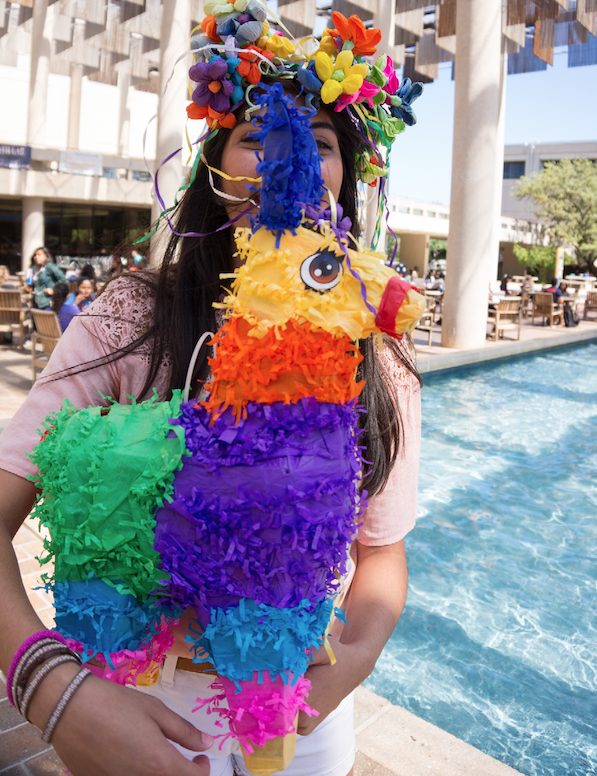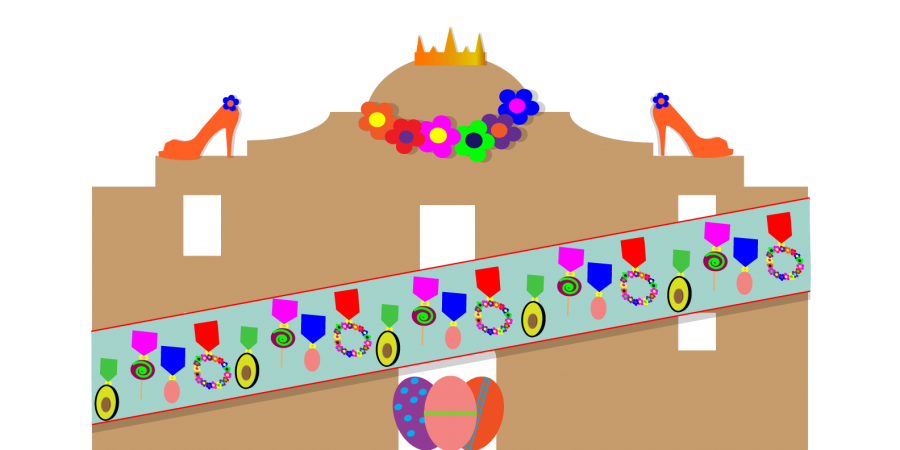What exactly is Fiesta?


According to fiesta-sa.org, some 3.5 million party-goers enjoy Fiesta. More than 20 percent of Fiesta-goers travel from across the state, the nation and the world.
Fiesta is one of the nation’s premier festivals with an economic impact of more than $284 million for the city.
The 10-day celebration displays more than 100 events featuring music, food, sports, pageantry, military and patriotic observances, exhibits and parades.
Fiesta wasn’t planned in a day.
The celebration’s name changed throughout the years. In 1960, the name was officially changed from Fiesta San Jacinto to Fiesta® San Antonio.
The first Battle of Flowers, a Fiesta event, took place in 1891—55 years after the end of Texas Revolution.
A group of San Antonio citizens honored the heroes of the Alamo and Battle of San Jacinto with a Battle of Flowers parade. The parade included horse-drawn carriages, bicycles decorated with fresh flowers and floats carrying children dressed as flowers. Parade participants pelted each other with blossoms.
Within a few years, more events took place on or near April 21: a carnival, balls and coronations of Fiesta “royalty.” Other early events included street dancing, a children’s festivals, a Trades Display Parade and an orphans party.
Since 1895, Fiesta has been an annual event—except in 1918 (because of WWI) and in 1942-1945 (because of WWII).
As it exists now, Fiesta and its royalty is a celebration of the city’s rich and diverse cultures.
Popular long-time traditions and other parades include the River Parade, Fiesta Flambeau Parade, a Night in Old San Antonio (NIOSA), Cornynation, First Taste of New Orleans, St. Mary’s Oyster Bake and Fiesta royalty.
Seven crowns are designated as official Fiesta royalty. The Queen of the Order of the Alamo’s first counterpart was crowned in 1895 as the Battle of Flowers Queen. In 1900, the Queen had a court for the first time: a princess, duchesses and other attendants.
In 1909, the Order of the Alamo was established. The members meet once a year to choose the next year’s queen and her court. The queen’s court includes a princess, 12 in-town duchesses and 12 out-of-town duchesses.
The first King Antonio was crowned in 1915. Throughout Fiesta, King Antonio visits the organizations and charities supported by the Texas Cavaliers, which were formed in 1926. The organization consists of over 500 business, civic and community leaders who promote and preserve bravery and independence for which the heroes of the Alamo died. The Cavaliers are tasked with choosing King Antonio from within their ranks.
Every year, the Texas Cavaliers River Parade features more than 45 colorful floats decorating the San Antonio River.
El Rey Feo originates from the medieval tradition in which peasants elected one of their own as king for a day. Rey Feo was first crowned in 1947 and became an official part of Fiesta in 1980. Candidates for the title raise money to award scholarships.
Other official royalty includes Miss Fiesta San Antonio. She dates back to 1949 in conjunction with the Flambeau Parade. Today the Miss Fiesta Scholarship Pageant makes its selection from among San Antonio college students.
The Reina de la Feria de las Flores. Similarly to Rey Feo, this queen earns her crown by raising funds for the Rey Feo Scholarship Committee. The first reina was chosen in 1947 along with the first Ugly King.
The Charro Queen. She represents the San Antonio Charro Association, a San Antonio tradition since 1947. A Day in Old Mexico and the Charreada trace their history back to 1550s Mexico.
Queen of Soul. The goal of the San Antonio Queen of Soul Inc. is to provide a representative of the African-American community at Fiesta activities and other civic and community programs.
Miss S.A. College students compete for this title. The winner represents San Antonio in the Miss Texas Pageant in Fort Worth in July.
Fiesta has become mostly all fun and games. Out of more than 100 events, only three official events still honor the meaning behind the first Battle of Flowers—to honor the Battle of the Alamo and San Jacinto.
An event called This Hallowed Ground is a walking tour of the original perimeter walls of the Alamo compound. Participants view the perspective of the battle from both sides, from moderator Robert Benevides along with members of the San Antonio Living History Association.
The San Jacinto Victory Celebration highlights Texas’s independence from Mexico 181 years after the Battle of San Jacinto. The event is sponsored by the Alamo Heroes Chapter of the Daughters of the Republic of Texas (DRT).
The Pilgrimage to the Alamo, which began in 1925, is a memorial tribute to the Alamo heroes and to the heritage of Texas; it is sponsored by the Alamo Chapter of the Sons of the Republic of Texas.
A solemn wreath-bearing procession of historic, civic, patriotic military and school groups depart from the Vietnam Memorial at the Tobin Center and walk silently to the Alamo. Simultaneously, a speaker from inside the Alamo walls intones the names of the Alamo defenders. Following the procession, wreaths are placed on the Alamo grounds and a brief memorial service follows. The sound of Taps ends the ceremony.
Both the San Jacinto Victory Celebration and the Pilgrimage to the Alamo are sponsored by the DRT. The Alamo Mission Chapter of DRT exists to provide and protect the history of Texas. The Chapter perpetuates the memory of the men and women who achieved and maintained Texas Independence, encourages historical research and preservation and celebrates Texas Honor Days.
Fiesta began as a single event to honor the memory of the Battle of the Alamo and San Jacinto, but now has evolved into a 10-day party with more than 100 events taking place all over the city and beyond the city limits in Boerne, Schertz, Windcrest, Balcones Heights and Alamo Heights.
Fiesta is a celebration of San Antonio’s diverse heritage, culture and spirit for the city’s residents and visitors.


